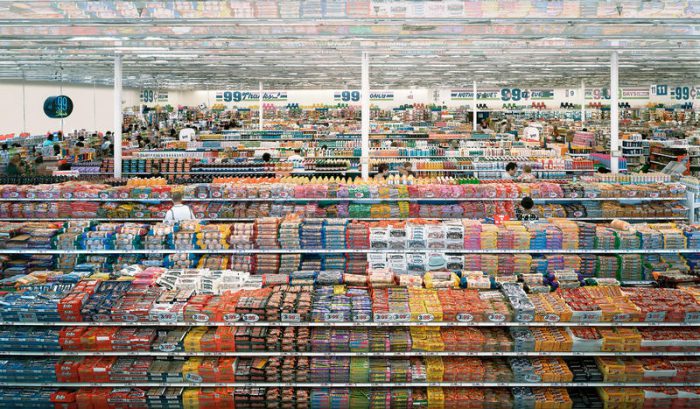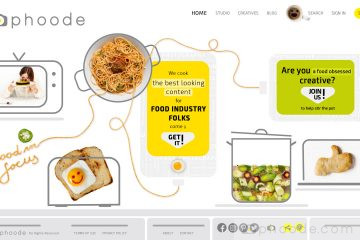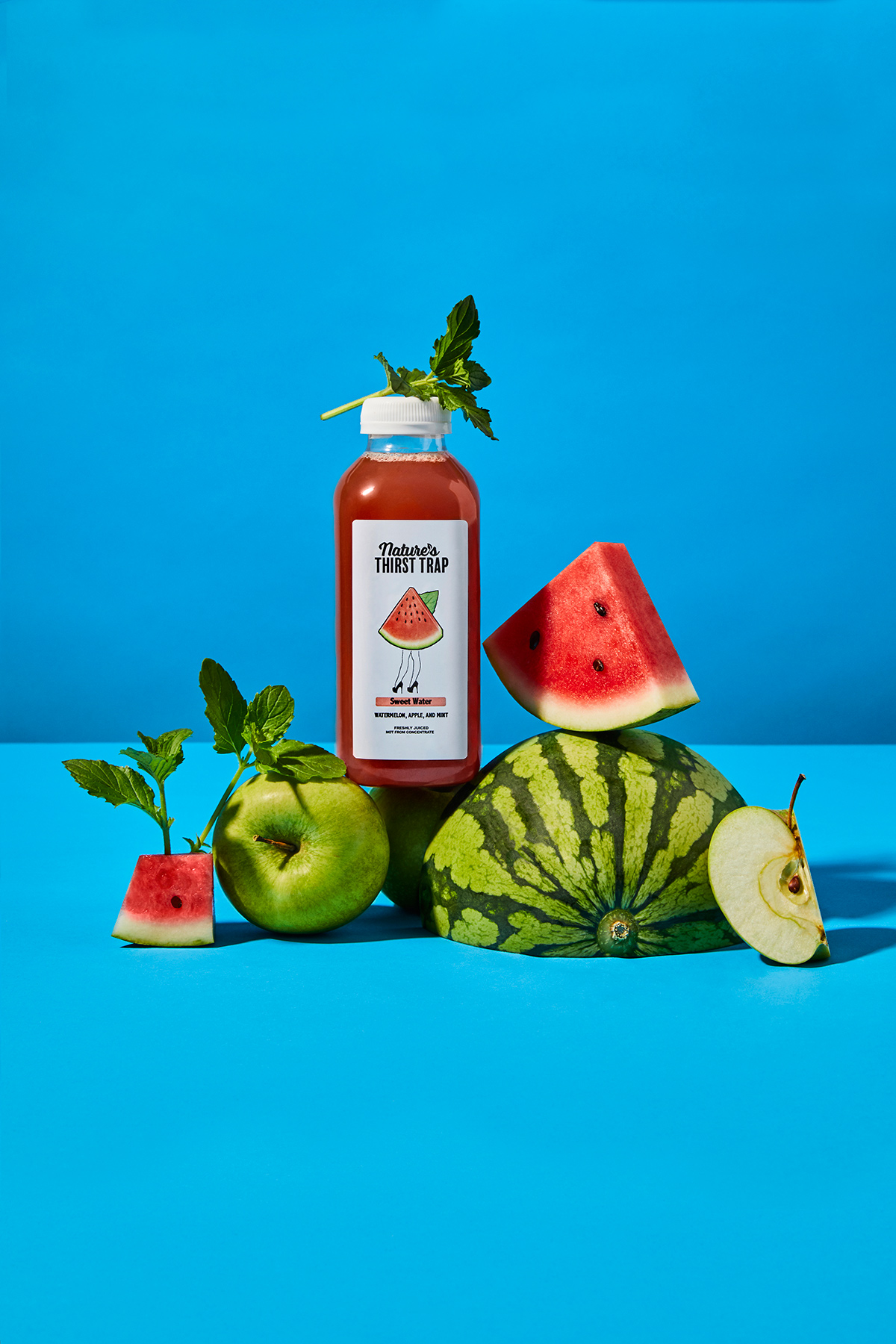Epic Food Photography for Sustainability by Andreas Gursky
What do livestock, candy bars, Gucci stores, and the Tour de France all have in common? They are all subjects Andreas Gursky has studied to highlight the effects of globalization and capitalism! Famous for enormous prints and a disassociated perspective, a less talked about aspect of this epic artist’s work is his latent plea for a more sustainable and individual world. In real life, as in his photographs, the food industry is certainly not free from criticism.
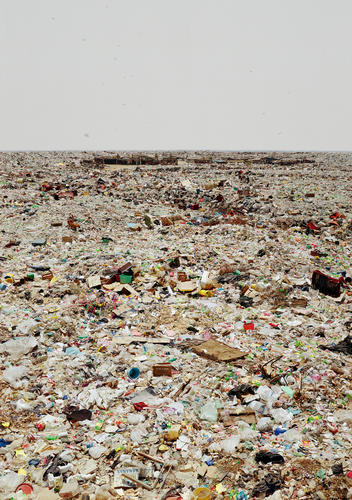
A Photographer’s Paradise
A breeding ground for leading contemporary photographers of the late 70s and early 80s, the Kunstakademie Düsseldorf School of Photography has left its indelible fingerprints on the history of art. Taught by Bernd and Hilla Becher, students such as Thomas Struth, Axel Hütte, Thomas Ruff, and Andreas Gursky himself, were instilled with disciplined composition and formal techniques that started a worldwide trend. Tendencies of the Düsseldorf School present in Gursky’s work are straight-lined compositions, the use of large format, and a cold, distanced perspective. If you’re shooting food photography for a message of sustainability, you must know the effective methods Gursky used to do this.
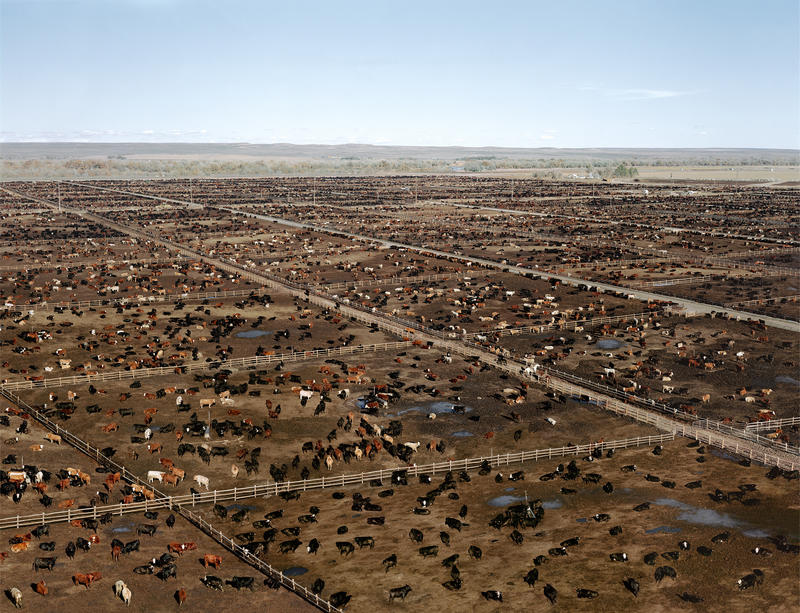
Factory Farming
The image Greenley, 2002 demonstrates a few of Gursky’s photographic techniques. First, shooting from slightly above the landscape, over a long distance or large area. Secondly, reducing subjects to a speck within a large print (here the cows). And lastly, the presence of straight lines within the composition. Because of these three attributes, each cow loses its importance and an endless expanse is created. The same as in Gursky’s photos of large crowds where people become a homogeneous mass of consumers, the cows are a globally traded product in this picture, not an animal.
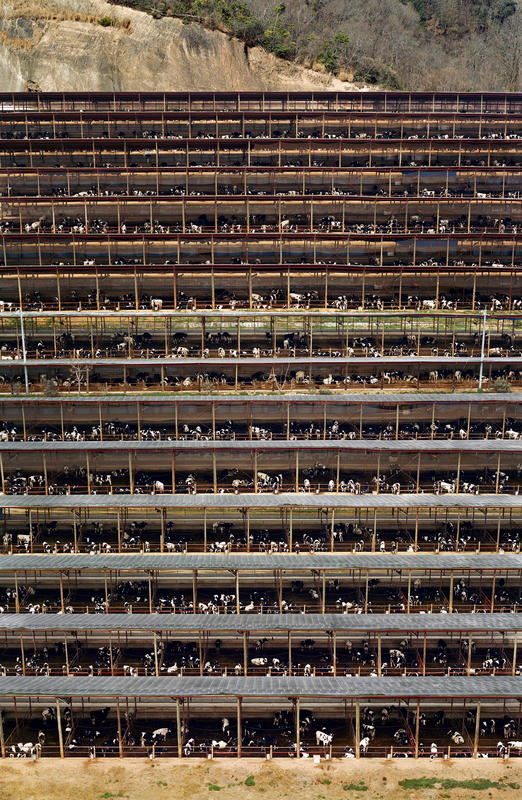
The repeated horizontal line of stalls off into the background although not infinite, suggests expansiveness. The size of the print, 10′ x 6’10”, imposes upon the viewer and shifts the scale of the subject from the local to the global. The formality of the composition leaves a dry and calculated look that indicates this is food photography for sustainability and not for expanding beef production.

99 Cent, 1999
This could be Gursky’s most famous photo. Not only because it set a record at the time for most expensive photo ever sold, but also because it summarizes quite well his message of consumption. Instead of people or cows, the subject reduced to patches of color is candy. Reese’s, Rolos, Mounds, Hershey’s Bars, and Starbursts are not just cheap snacks, but agents in the corporatization of our food.
Just as the viewer of these gigantic prints feels small in their presence, the grocery store shopper is overwhelmed by ever-increasing advertising and supply of impalpable products with undetectable ingredients, contained within numerous shells of plastic. As consequence, the individual is superseded by the brand’s desire to expand at whatever cost. Obviously this interpretation is extrapolated a bit from the original class and calculation with which Gursky communicates his message of food photography for sustainability. However, especially when 99 Cent is paired with other photos (perhaps, all of those within this article), these kinds of subtexts surface to an easily visible plane.
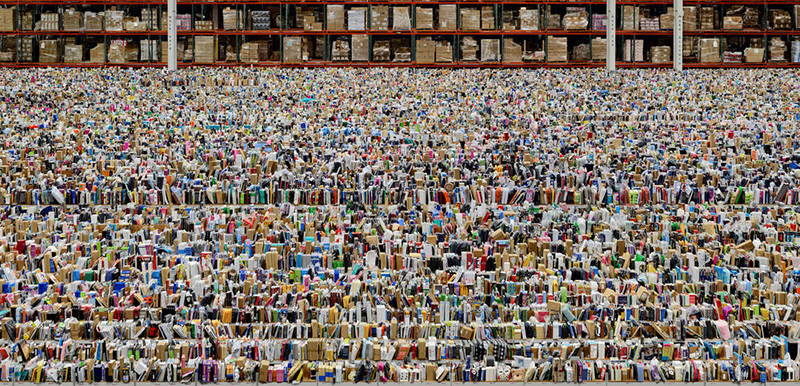
Viewing His Work as a Whole
Throughout his numerous exhibitions, Gursky has covered a variety of subjects, while never loosing his unique touch. Artistically, all food photographers should strive for this, versatility and signature style. By stepping back (literally) from his subjects and printing at (literally) global proportions, what is a photo of a specific location can symbolize world market politics, including those of food. By exhibiting and publishing certain photos together, a connection can be drawn–trash piles are not just trash piles, but the outcome of eating the overly packaged and preserved food from 99 cent stores. As a photographer, pay attention to the ideas in the margins between photographs and how images relate to each other.
When dealing with food politics in commercial food photography it is important to be poignant and impactful, yet not too heavy-handed. Studying examples of food photography for sustainability not only from the commercial world, but from fine art as well, is key to becoming a well-rounded artist.
Have you taken photos connected to the themes in this article? Were you inspired by this artist yourself? Let us know in the comments section below.




